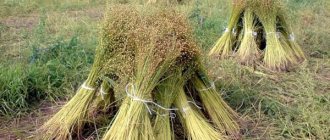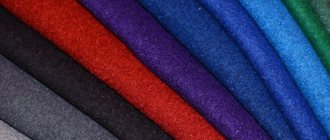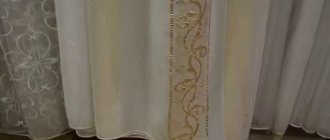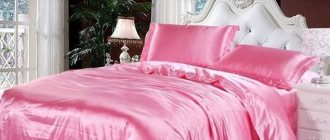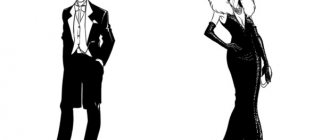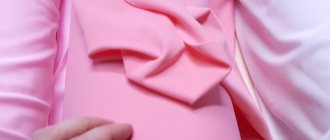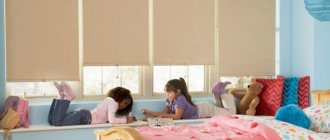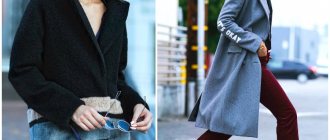Description of mesh fabrics
It is difficult to answer unequivocally what the mesh fabric is called. This is a group of materials for different purposes, united by structural features. The cellular texture allows the textile to pass air freely, making the product lighter, which contributes to additional comfort.
A typical representative of mesh fabric is tulle. Varying in hardness, it is used in tailoring and stage costumes. There are several types of mesh material, and each of them is used in the clothing industry.
A special feature of this group is the plain weave of fibers with a large gap between the weft and warp threads. Due to this method, cells (holes) are formed.
Polyester, polyamide, elastane, and viscose are used to create fabrics. The purpose and characteristics of the material depend on the type of raw material. Viscose makes the fabric soft and elastic, polyester and polyamide give rigidity and provide good dimensional stability. Dyeing and finishing of woven fabrics is carried out at the final stage of production.
Areas of use
Mesh fabric is in quite high demand in the market of consumers and creators of fashionable clothing.
The following variations are used specifically for sewing:
- soft mesh;
- tulle;
- spandex tulle.
Important! Decorative fabrics are divided according to their stiffness and gymnastic characteristics. Really hard and dense materials are used mainly for the production of curtains against mosquitoes. It is better not to use it on clothes, as it can seriously damage the skin. Mesh fabric made from natural fabrics is technical and may contain synthetic threads, and this fact affects the quality and characteristics of the products.
Fatin
Tulle is used to sew voluminous women's dresses and chic tutus. Elegant and graceful styles of skirts and other fashionable outfits are popular among young fashionistas from the big city. It should be taken into account that women can wear such clothes depending on their external data and especially their figure. To wear a tulle skirt embroidered with patterns, it is vital to be slim. And most of all this type of material is used for wedding dresses, veils, decorations for handbags and cute gloves with lace. And if guests decide to give curtains to the newlyweds in love, then they should opt for the fabric in question.
The tensile mesh material includes a special element elastane. Many creative individuals use canvas to sew ball gowns and suits in the atelier. In the sports industry, material is used in the production of tracksuits for gymnasts, swimmers and figure skaters. And flesh color makes it possible to create a mirage of the absence of fabric. This exceptional property will allow you to create masterpieces bordering on fantasy.
It is also very convenient to use elastic mesh for making underwear. Variations of clothing with the inclusion of mesh fabric are truly irresistible and feminine, suitable for an evening sundress and cocktail dress. And in addition to all of the above, there is a valuable property - resistance to wear and durability.
Note! You should always remember about the rapid combustion of mesh in a fire and choose the right fabric for children's and teenagers' clothes, paying attention to this important indicator of life safety. Clothing nets can be both convenient and dangerous for children and adults.
You might be interested in this Features of polycotton: material components and characteristics
Therefore, there are several applications of mesh on the market:
- Production of women's evening dresses;
- Production of dance costumes and skirts;
- Production of beachwear and accessories;
- Production of sports trousers, T-shirts, T-shirts and windbreakers;
- Production of swimming suits;
- Production of curtains for the home and mosquito nets;
- Production of wedding attributes, dresses, lace tights and handbags.
General characteristics of clothing nets
Fabric specifications may differ in certain parameters. The table below shows the general indicators of the group of mesh materials:
| Properties | Indicators |
| Raw material type | Synthetic, artificial |
| Fibers used | Polyester, viscose (up to 30%), polyester, lycra (up to 5%), lurex |
| Weave Type | Simple (linen) |
| Density, g/m2 | 35 – 270 |
| Standard fabric width, cm. | 150, 300 |
| Water resistance | Low |
| Hygroscopicity,% | 6 – 12 |
| Moisture absorption rate | Average |
| Air exchange | High |
Open to see the entire table
| Vapor permeability | Optimal |
| Electrification | Expressed |
| Side | Double-faced canvases |
| Drawing | Plain colored plain fabrics, printed, kmf |
| Manufacturer | China, Türkiye, Italy |
| Standardization | GOST 29223 – 91 |
| Price | Available, from 69 rub. for 1 meter |
Types of mesh for clothing
Expert opinion
Alyona
Fabric expert and technologist Alena Khlebnikova is ready to answer your questions.
Write to us
The types of materials differ not only in the size of the cell and its design, but also in terms of rigidity and composition. Depending on these parameters, the purpose of the mesh fabric is determined.
Chiffon is conventionally classified as mesh fabric. This is a transparent lightweight fabric with high air conductivity. Drapes well, but is capricious in sewing and cutting.
A relatively new textile is Air-mesh - a knitted fabric consisting of three layers. The material is based on polyester fibers. Used for the manufacture of tourist equipment and sportswear.
Neoprene mesh is also known. The size of its cells is minimal. The fabric is made from foam rubber, and wetsuits and swimsuits are sewn from it.
Stretch mesh
Stretch mesh fabric is a synthetic material with the addition of elastane fibers. It has high strength and long service life. Used in the manufacture of underwear and inserts in models of evening dresses and blouses. The translucent material hugs the body beautifully and is stretchable in one or two directions.
Mesh with rhinestones
The name of the fabric, like the mesh with rhinestones, depends on the base. It can be soft or medium hard tulle, stretch or lace. A distinctive feature is the presence of rhinestones. Decorative elements are most often attached using hot-melt adhesive, less often - sewn on. The fabric is used for sewing dance costumes and evening dresses.
False mesh
False mesh is a synthetic material made of polyester fibers that has a non-through cellular structure. This type imitates a mesh. Shows high elasticity. Used in sewing sportswear.
Mesh with beads
The mesh with beads is created similarly to the material decorated with rhinestones. The difference is that in this version the hot-melt adhesive method is not used. Beads or seed beads are sewn onto the fabric. The material is used in sewing elegant items and making accessories.
Tulle
The most famous and popular material in the mesh group is tulle. There are several varieties of this textile:
- soft. It is used as an independent fabric and as a companion. And also used as a lining. Airy fabric creates a feeling of lightness and adds femininity to the silhouette;
- medium hardness and hard tulle are used where it is necessary to create volume: for the manufacture of petticoats, tutus, interior decoration.
Tulle is a fabric consisting of 100% polyester. Corset types of mesh have high dimensional stability. Used in sewing corrective underwear.
Pleated mesh
They also produce pleated fabrics with a fine mesh texture. Due to the composition, the material holds its shape well. Used for sewing pleated products.
Shiny with glitter
Glitter on a mesh base is a fabric on the surface of which fine glitter is applied using an adhesive method, which does not wash out during washing.
Perforated mesh
Perforated mesh is used as a lining material for holiday and sports items. Openwork motifs are made during the fabrication process.
Large mesh
Large mesh - universal in composition and purpose. Differs in cell size. Depending on the composition and production method (woven and non-woven fabrics), it is used for the manufacture of protective inserts, linings, and accessories.
Mesh with pattern
Material with a print applied to the surface by printing is gaining popularity. It is used to make light curtains, children's elegant clothes, and ball gowns.
Embroidered mesh
Guipure is a mesh with embroidery. It is a soft canvas with high aesthetic characteristics. The pattern, made with matching or contrasting threads, looks voluminous. The material is used in sewing underwear, elegant clothes and decorating individual parts.
Sequins on mesh
This is one of the densest materials in the group. Sequins on the mesh are sewn on one or both sides of the fabric. This textile is used to make festive clothes and costumes for performances. Sequins create a play of light and look impressive. The disadvantage of this type is the high cost and difficulty in caring for the product.
Types of mesh
There are several named types of mesh:
Stretch mesh - features of the original material
This fabric is quite elastic and easily stretches in any direction, it can be light, polka dot and even transparent. As a rule, it is used to decorate costumes and dresses in theaters and cultural institutions for actors, dancers and singers. Sometimes used for the production of special underwear and inserts in tight-fitting dresses.
Stretch
Note! Concise motifs and the ability to move quickly contribute to the market and production of women's clothing. On the site, the model moves smoothly and easily due to the soft stretch material. Also in everyday life, every fashionista chooses underwear that stretches and does not restrict movement.
Brocade stretch dark gold
Brocade is perfect for evening dresses and skirts; this fabric does not wrinkle and attracts attention from the first meeting. And if brocade also stretches, then it’s just a super material. And it is definitely worth purchasing this fabric for sewing any clothes, in most cases festive, camouflage and evening style. Bright patterns, mesh fabric with flowers and easily stretchable material will complement a creative person who cannot stay in one place and prefers to move actively.
And dark shades look chic and amazing, mostly decorating young women and girls. At the same time, dark brocade with a golden tint is also suitable for young gentlemen to stand out from the crowd with their individuality.
Brocade stretch
Soft mesh
This type of fabric harmoniously complements a dress, mint sundress, skirt or even bohemian women's trousers. Mesh fabric decorates everyday outfits with its variations, both soft versions and hard fabric in rare cases. The choice of one fiber or another depends primarily on the goal that a young girl who knows how to sew and decorate clothes is striving for. Suitable for lining types.
Soft mesh
Rigid mesh
It’s easy to find out what mesh fabric for clothing is called; sometimes it can be called tulle; it is made in most cases from polyester and retains its shape perfectly. Ballet tutus, petticoats and wedding dresses gain volume through the use of tulle. In addition to this, this canvas often contains patterns and unusual embroidery methods can be called. Elegant outfits require special skills of self-expression. This applies to special occasions, weddings, graduations and long-awaited anniversaries.
You might be interested in Description of polysatin: what it consists of, use for bed linen
Rigid mesh
Applying grids
Mesh dresses
The design of clothing models made from mesh materials depends on the degree of rigidity and elasticity. The following products are sewn from lightweight textiles with through holes:
- underwear, corsets;
- curtains and light curtains;
- interior decorative elements;
- skirts;
- elegant tunics and blouses;
- wedding, evening, children's holiday dresses;
- dance, stage, circus costumes;
- used for sewing lining in outerwear;
- jewelry and accessories;
- sports jerseys;
- camouflage nets.
Mesh textiles are used to make individual parts in sewing hats, bags, and backpacks. Less commonly used in the production of hosiery.
What are the types of mesh fabric called and where are they used?
The most popular types for sewing are:
- tulle;
- spandex tulle;
- soft mesh.
Materials are divided according to their degree of hardness. The toughest ones are used for mosquito curtains. They are not suitable for sewing clothes as they can injure the skin.
Tulle is used for sewing voluminous clothing models. Airy and fluffy skirts and dresses are popular among young women and girls. It is worth noting that older ladies cannot always afford such elegant pomp of an outfit made from such fabric. These materials occupy a fairly large segment in the production of wedding clothing and accessories. Nets of different weaves are used for sewing curtains.
Stretchable mesh fabrics contain elastane. They have proven themselves well in the ballroom dance costume industry and in sportswear for gymnasts, figure skaters, and swimmers. Elastic, flesh-colored tulle spandex creates the illusion of no fabric. This property allows you to create fantasy masterpieces.
This type of material has found application in sewing underwear. Models combined with mesh are feminine and beautiful. The key properties are wear resistance and durability.
Soft lining mesh is used in tracksuits. This tulle is an excellent option for children's products.
Advice
You need to remember about the fire hazard of mesh and choose the material for a children's dress, focusing on this indicator.
There are also such varieties:
- air-mesh is a three-layer material used for sewing tourist equipment and clothing;
- neoprene is a mesh material made of foam rubber, which is used in sewing wetsuits, swimsuits and in parts of fashionable clothing;
- false mesh - knitted fabric with imitation cells.
Advantages and disadvantages
The advantages of the fabric include:
- ease;
- ease of care;
- low cost;
- the ability to implement design solutions;
- multifunctionality;
- elasticity;
- ability to hold shape and create volume;
- abrasion resistance;
- good air exchange;
- dries quickly;
- hygroscopicity.
The disadvantages include the following properties:
- complexity of tailoring;
- the fabric is unstable to mechanical damage and exposure to UV rays;
- May cause irritation on sensitive skin.
General recommendations for care
This group of materials is made from synthetic raw materials, sometimes with the addition of viscose and elastane. Such things are easy to care for. But the manufacturer's recommendations must be taken into account.
Wash items separately from others at a temperature of 30 - 40 degrees. For white fabrics, bleaching is acceptable. Wring out carefully, especially for materials with sequins, beads, and rhinestones. For pleated items, spinning is not allowed.
Iron the product from the wrong side at minimum heat settings. You can't steam!
It is advisable to store clothes in covers.
For evening and stage outfits with a lot of decor, as well as for heavily soiled items, dry cleaning is acceptable.
Types and their properties
The mesh is divided into several types, differing in appearance and characteristics:
- rigid mesh - dense fabric that holds its shape well. It is also called tulle. It is made from polyester. The texture of the material is fine-mesh. It is suitable for creating skirts, petticoats, room decor, handmade items;
- soft mesh - elastic fabric with small cells. The material is translucent and resembles chiffon. It is used for finishing and sewing women's clothing: skirts, dresses, blouses, tunics, T-shirts;
- stretch mesh - stretches well both along the warp and weft. It is used for sewing underwear, including shapewear. It is used to make inserts for figure-hugging dresses or trousers. Flesh-colored material is used to create costumes for ballroom and sports dancing, figure skating;
- lining mesh is a durable and elastic material. It allows the body to breathe, allows air to pass through well, and does not hinder movement. Most often used for sewing linings for tracksuits and shorts;
- false mesh - knitted fabric with a cellular structure, but without holes. The fabric is elastic, pleasant to the body. It is used to make sportswear, competition uniforms, T-shirts and dresses for everyday wear;
- flag mesh – knitted weave fabric. It is durable and dense, used in outdoor advertising. Flags, awnings, banners are made from it;
- ironing net – made of heat-resistant fibers. It is used instead of gauze for ironing or steaming delicate fabrics;
- laundry mesh - a material with small or medium cells. It is used to make bags for washing or storing clothes;
- adhesive mesh is a light web-like material impregnated with adhesive compounds. It is used for hemming trousers, sealing collars, cuffs, and facings. It can be used to attach appliqués to fabric. The adhesive layer is “activated” under the influence of a hot iron.
Based on the size of the cells, there are large mesh, fine mesh, and medium mesh. The structure is transparent mesh and woven cellular material without holes. Based on the latter, a waterproof mesh is produced. It is treated with special compounds and used for the manufacture of awnings and canopies.
The fabric is easy to dye and does not fade when washed. Mesh fabric can be either black, white, beige, gray, or bright colors (green, blue, pink, red, gold, orange, purple). On sale you can find canvases in gradient colors.
The material is produced with decoration. Mesh fabric with sparkles, rhinestones, sequins, and lurex is popular. It is used for sewing elegant clothes. Hairpins, brooches, and room decor elements are made from it.
The fine-mesh material is decorated with embroidery. You can find mesh fabric with a pattern (polka dots), photo prints are applied to it, including 3D.
The material is produced both abroad and in Russia. The French and Italian grid compares favorably with its competitors. Its quality is significantly higher than fabrics from China.
